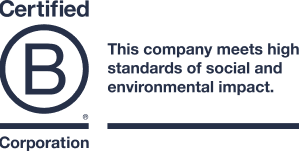Ocean gyres are large systems of circulating currents in the ocean that can accumulate marine debris, including microplastics and other forms of pollution. The gyres aren't solid like islands - you can walk on them. It's more like a plastic smog refusing to dissipate. Cleaning up these ocean gyres is a major challenge, and there are several key factors that make this task difficult.
One of the main challenges of cleaning up ocean gyres is the sheer scale of the problem. The five major ocean gyres are vast, covering millions of square kilometers of ocean. This makes it difficult to locate and remove the pollution that has accumulated in these areas.
Another challenge is the fact that much of the pollution in ocean gyres is in the form of microplastics, which are small pieces of plastic that are less than five millimeters in size. These microplastics are difficult to see and are easily mistaken for plankton and other food sources by marine life. This makes them difficult to remove and can lead to negative impacts on marine life.
One of the main reasons that microplastics are bad for the ocean is that they can be ingested by marine life. Smaller microplastics can be mistaken for food by fish and other marine organisms, and when they are ingested, they can cause internal injuries or block the digestive system. Larger microplastics can entangle marine life, causing them to suffocate or drown.
Another reason that microplastics are bad for the ocean is that they can absorb toxins from the surrounding water. When microplastics absorb these toxins, they can become even more harmful to marine life that ingests them.
Microplastics can also have indirect effects on the ocean by acting as a carrier for invasive species. When microplastics are carried by ocean currents, they can transport invasive species to new areas, where they can disrupt the local ecosystem.
At the macro level, the ocean gyres are constantly moving, making it difficult to target specific areas for cleanup efforts. This can make it difficult to track the pollution and make sure that it is effectively removed from the ocean.
Furthermore, the lack of international coordination and funding is a major challenge to cleaning up ocean gyres. This problem is complex and requires a global effort, but there is currently a lack of political will and financial resources to address it.
Finally, there is also the question of what to do with the pollution once it has been removed from the ocean. Disposing of this pollution in a safe and environmentally-friendly manner is a major challenge, and there are few options for doing so at present.
Overall, cleaning up ocean gyres is a major challenge due to the vast scale of the problem, the difficulty of removing microplastics, the constantly moving nature of the ocean gyres, the lack of international coordination and funding, and the challenge of disposing of the pollution once it has been removed. Solving these challenges will require a concerted global effort and significant resources.
We spend a lot of time thinking about the 5 gyres in the ocean and how to clean them up. We fund ocean plastic removal with the sale of our natural fiber hemp and cotton beach towels, but more important than that is stop the flow of plastic into the ocean in the first place (it's like trying to mop up an overflowing sink before turning off the faucet) which is why we only work with suppliers who commit to reducing or eliminating plastic our supply chain. Remove and Improve. It's the FiveADRIFT way.


